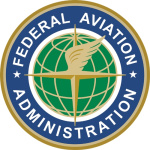- Industry: Government
- Number of terms: 35337
- Number of blossaries: 0
- Company Profile:
The ability for a pilot to manage all resources effectively to ensure the outcome of the flight is successful.
Industry:Aviation
Fog resulting from the movement of warm, humid air over a cold surface.
Industry:Aviation
Pilot knowledge of where the aircraft is in regard to location, air traffic control, weather, regulations, aircraft status, and other factors that may affect flight.
Industry:Aviation
A condition of flight in which the nose of an airplane tends to yaw toward the outside of the turn. This is caused by the higher induced drag on the outside wing, which is also producing more lift. Induced drag is a by-product of the lift associated with the outside wing.
Industry:Aviation
A predetermined manoeuvre that keeps aircraft within a specified airspace while awaiting further clearance from ATC.
Industry:Aviation
An uncoordinated turn in which the rate of turn is too great for the angle of bank, pulling the aircraft to the outside of the turn.
Industry:Aviation
The science of the action of air on an object, and with the motion of air on other gases. Aerodynamics deals with the production of lift by the aircraft, the relative wind, and the atmosphere.
Industry:Aviation
A racetrack pattern, involving two turns and two legs, used to keep an aircraft within a prescribed airspace with respect to a geographic fix. A standard pattern uses right turns; nonstandard patterns use left turns.
Industry:Aviation
The procedural, psychomotor, and perceptual skills used to control a specific aircraft or its systems. They are the airmanship abilities that are gained through conventional training, are perfected, and become almost automatic through experience.
Industry:Aviation
A map used in air navigation containing all or part of the following: topographic features, hazards and obstructions, navigation aids, navigation routes, designated airspace, and airports.
Industry:Aviation
